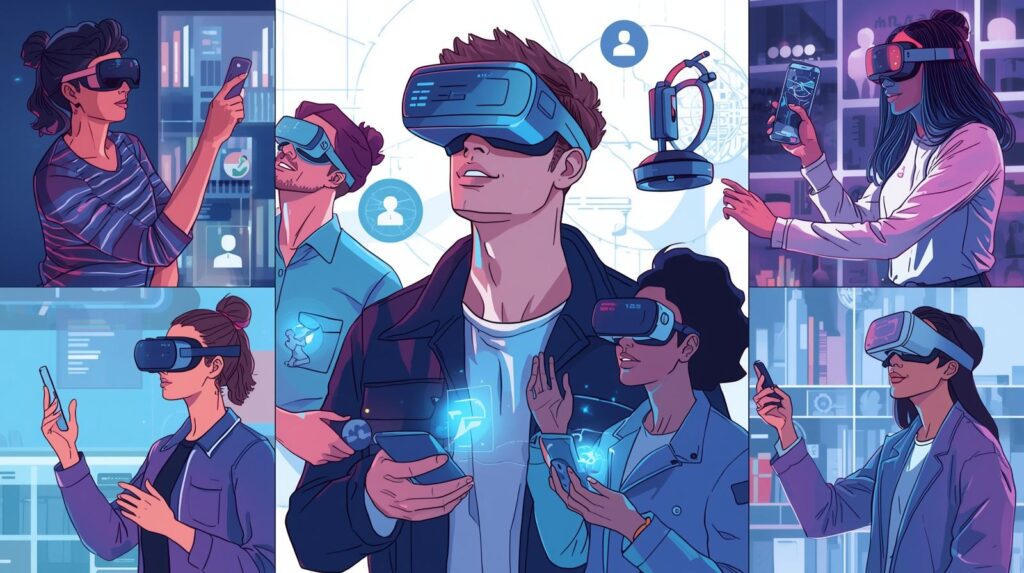In the rapidly evolving landscape of digital transformation, Extended Reality (XR) is emerging as a frontier with vast potential. Encompassing Virtual Reality (VR), Augmented Reality (AR), and Mixed Reality (MR), XR offers immersive experiences that blend the physical and digital worlds. As we navigate through the complexities and opportunities of these technologies, it is essential to understand their current applications and future implications.
Extended Reality serves as an umbrella term for immersive technologies that extend our perception of reality. VR creates a completely immersive environment, AR overlays digital content onto the real world, and MR offers a hybrid that allows interaction between physical and digital elements.
Initially popularized through gaming, VR is now finding its footing in various industries. In education, VR facilitates interactive learning experiences, enabling students to explore historical sites or complex scientific concepts in a virtual space. In healthcare, VR is used for surgical simulations, offering a risk-free environment for training.
Moreover, VR is transforming the real estate sector by providing virtual property tours, allowing potential buyers to experience a property without being physically present. This not only saves time but also expands the reach of real estate markets.
AR is subtly integrating into our daily lives through applications like mobile games and social media filters. However, its impact is far-reaching, particularly in retail and marketing. AR enables consumers to visualize products in their own space before making a purchase, thereby enhancing the shopping experience and reducing return rates.
In manufacturing, AR assists in assembly line work by overlaying instructions directly onto equipment, improving accuracy and efficiency. Similarly, in the automotive industry, AR is used to develop heads-up displays, providing drivers with critical information without diverting attention from the road.
For businesses, XR presents opportunities to enhance operations, engage customers, and innovate products. However, integrating XR technologies requires strategic planning and understanding of both its benefits and limitations.
XR technologies are revolutionizing the way organizations approach training and development. With VR, employees can engage in realistic simulations that replicate workplace scenarios, leading to improved skill acquisition and retention. For remote teams, XR facilitates virtual meetings in immersive environments, fostering collaboration and creativity.
In today’s competitive market, creating memorable customer experiences is crucial. XR offers novel ways to engage customers through interactive and personalized content. Brands can utilize AR for immersive marketing campaigns, allowing customers to interact with products in unique ways. This not only captures attention but also strengthens brand loyalty.
In industries such as automotive and aerospace, XR is transforming product design and prototyping. Engineers and designers can visualize and manipulate 3D models in an XR environment, identifying potential flaws and optimizing designs before physical prototypes are built. This accelerates the development process and reduces costs.
While XR technologies hold great promise, they also present challenges that organizations must address.
Implementing XR can be resource-intensive, requiring significant investment in hardware, software, and infrastructure. Additionally, the development of high-quality XR content demands specialized skills and expertise, which may be a barrier for some organizations.

As XR technologies collect and process vast amounts of data, there are inherent privacy and security risks. Organizations must ensure robust data protection measures are in place to safeguard user information and comply with regulations.
For XR to be successful, user acceptance is critical. Organizations must consider the user experience and ensure that XR applications are intuitive and accessible. Educating users about the benefits and functionality of XR can drive adoption and maximize its impact.
As XR technologies continue to evolve, their applications will expand across various sectors, driving innovation and transformation. The convergence of XR with other emerging technologies like Artificial Intelligence (AI) and the Internet of Things (IoT) will unlock new possibilities, creating more intelligent and responsive XR experiences.
For CTOs, business strategists, and innovation managers, the strategic integration of XR is crucial. By aligning XR initiatives with business objectives, organizations can harness its potential to enhance operations, deliver value, and maintain a competitive edge.
To capitalize on the opportunities presented by XR, organizations must stay informed about the latest trends and advancements. Engaging with industry experts, attending conferences, and participating in technology forums can provide valuable insights and foster innovation.
Extended Reality is not just a futuristic concept; it is a present-day reality with tangible applications and benefits. By embracing XR technologies, organizations can redefine how they operate, engage with customers, and innovate products. However, successful implementation requires thoughtful consideration of its challenges and a commitment to aligning XR with strategic goals. As we explore the possibilities of XR, its potential to transform industries and create new opportunities is only beginning to unfold.




